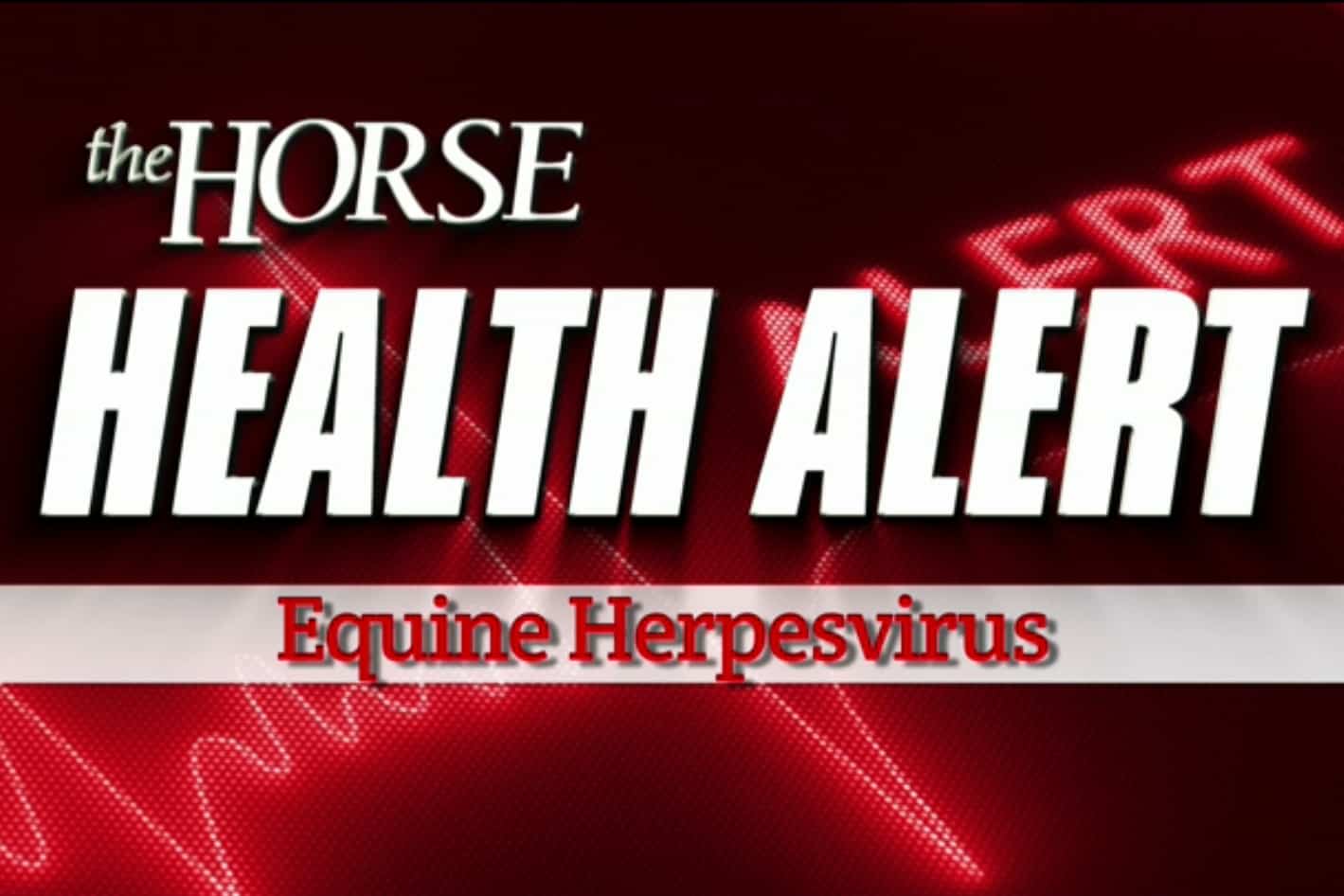Florida Horse Tests Positive for EHV-4

An attending veterinarian in Florida has confirmed a positive test for equine herpesvirus-4 (EHV-4) in a horse at a private Pasco County facility.
The affected 2-year-old Arabian gelding experienced respiratory signs that included fever, mild anorexia (loss of appetite), and bilateral mucopurulent discharge (nasal discharge containing pus from both nostrils).
The horse has no recent history of travel and is reported as recovering. No other horses on the premises have shown clinical signs.
EHV-4 Facts
Herpesvirus is highly contagious among horses and can cause a variety of ailments in equids, including rhinopneumonitis (a respiratory disease usually found in young horses), abortion in broodmares, and equine herpesvirus myeloencephalitis (EHM, the neurologic form).
The two most common forms of equine herpesvirus are EHV-1 and EHV-4. EHV-1 is the main cause of viral abortion outbreaks and can also result in fever or respiratory signs, which are sometimes followed by neurologic signs such as ataxia (incoordination), weakness or paralysis of the fore and hind limbs, urine retention and dribbling, loss of tail tone, and recumbency (inability to rise). The neurological form, EHV myeloencephalopathy (EHM), is a result of damage to the central nervous system’s vasculature.

EHV-4 usually causes respiratory disease and occasionally can cause abortion or neurologic disease. It is most commonly seen — often in autumn and winter — in weaned foals and yearlings. Older horses with EHV-4 are more likely to spread the virus without showing clinical signs.
Herpesvirus is easily spread by nose-to-nose or close contact with an infectious horse; sharing contaminated equipment including bits, buckets, and towels; or clothing, hands, or equipment of people who have recently had contact with an infectious horse. Routine biosecurity measures, including hygiene and basic cleaning and disinfection practices, should be in place at all times to help prevent disease spread.
Current EHV-1 vaccines might reduce viral shedding but are not protective against the neurologic form of the disease. Implementing routine biosecurity practices is the best way to minimize viral spread, and the best method of disease control is disease prevention.
Written by:
Diane E. Rice
Related Articles
Stay on top of the most recent Horse Health news with












